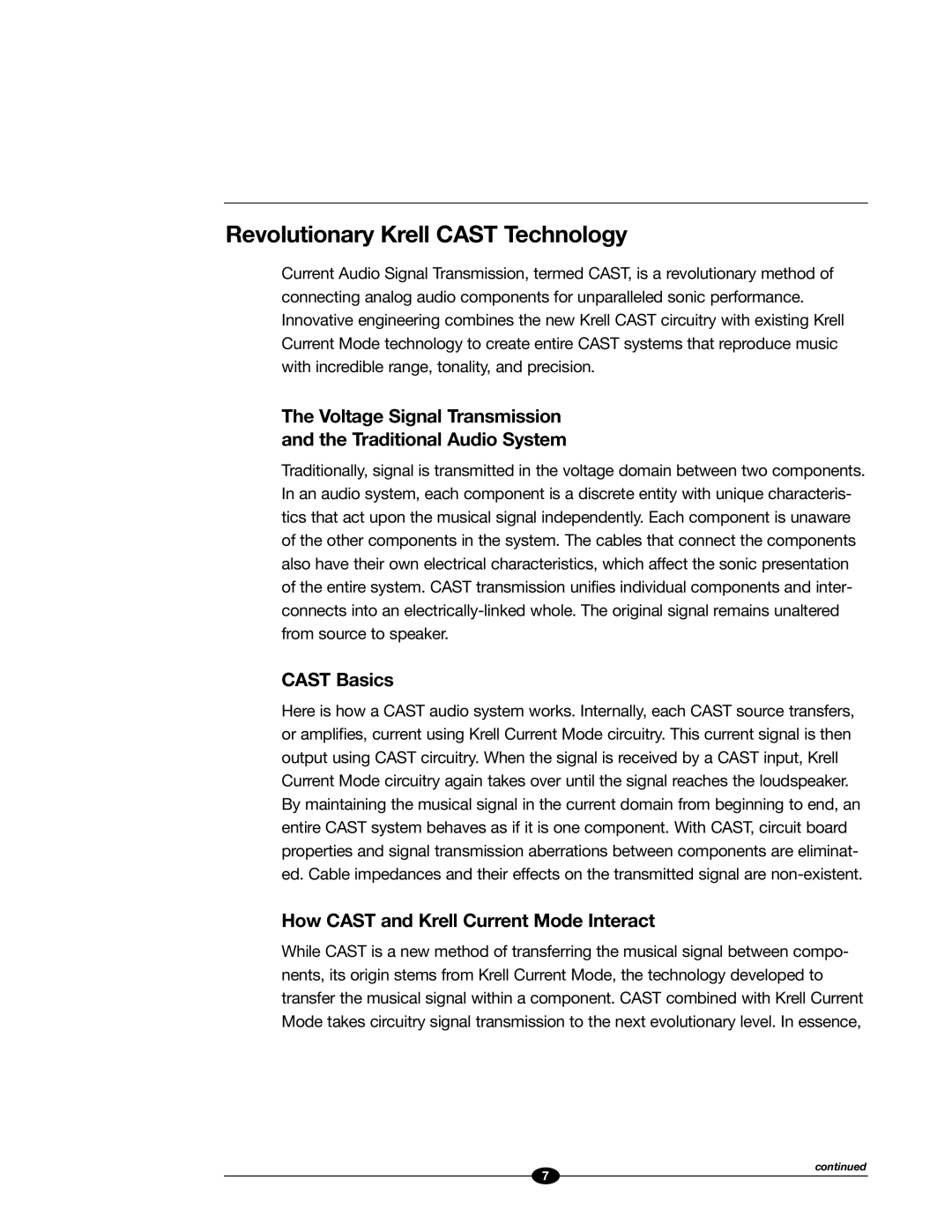
Revolutionary Krell CAST Technology
Current Audio Signal Transmission, termed CAST, is a revolutionary method of connecting analog audio components for unparalleled sonic performance. Innovative engineering combines the new Krell CAST circuitry with existing Krell Current Mode technology to create entire CAST systems that reproduce music with incredible range, tonality, and precision.
The Voltage Signal Transmission
and the Traditional Audio System
Traditionally, signal is transmitted in the voltage domain between two components. In an audio system, each component is a discrete entity with unique characteris- tics that act upon the musical signal independently. Each component is unaware of the other components in the system. The cables that connect the components also have their own electrical characteristics, which affect the sonic presentation of the entire system. CAST transmission unifies individual components and inter- connects into an
CAST Basics
Here is how a CAST audio system works. Internally, each CAST source transfers, or amplifies, current using Krell Current Mode circuitry. This current signal is then output using CAST circuitry. When the signal is received by a CAST input, Krell Current Mode circuitry again takes over until the signal reaches the loudspeaker. By maintaining the musical signal in the current domain from beginning to end, an entire CAST system behaves as if it is one component. With CAST, circuit board properties and signal transmission aberrations between components are eliminat- ed. Cable impedances and their effects on the transmitted signal are
How CAST and Krell Current Mode Interact
While CAST is a new method of transferring the musical signal between compo- nents, its origin stems from Krell Current Mode, the technology developed to transfer the musical signal within a component. CAST combined with Krell Current Mode takes circuitry signal transmission to the next evolutionary level. In essence,
continued
